#dji-phantom-4-pro
Photo
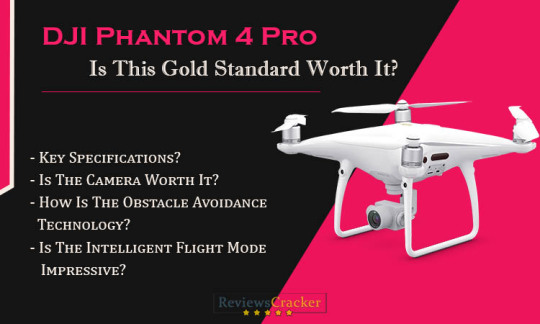
The dji-phantom-4-pro is an amazing drone set, especially for gadget lovers. The drone carries a standard controller, which allows users to handle the features. It comes with an HD camera, 1-inch CMOS, a wide ISO range, and an adjustable aperture. You can get the complete comparison and specification details at Reviews Cracker.
1 note
·
View note
Video
Bosweg, village of 't Zand, The Netherlands. by Alex de Haas
#Aurora HDR#DJI#Dutch#Europa#Europe#HDR#Holland#Lightroom#Nederland#Nederlands#Netherlands#Noord-Holland#Phantom#Phantom 4 Pro#Tour des Fleurs#Tour des Fleurs 2022#agriculture#agricultuur#akker#akkerbouw#bloem#bloemen#bloementeelt#bloemenvelden#bollenveld#bollenvelden#bulbfield#bulbfields#drone#farmland
3 notes
·
View notes
Video
youtube
DJI PHANTOM 4 PRO still the best for me
0 notes
Text
DJI Phantom 4 Pro V2.0 Specifications
Overview
The DJI Phantom 4 Pro V2.0 is a top-of-the-line drone that is designed for professional photographers and videographers. Equipped with a 1-inch 20-megapixel camera that can shoot 4K/60fps video and 14fps Burst Mode stills, this drone is capable of capturing stunning aerial footage with ease. It also has a mechanical shutter that eliminates the rolling shutter effect commonly seen in…
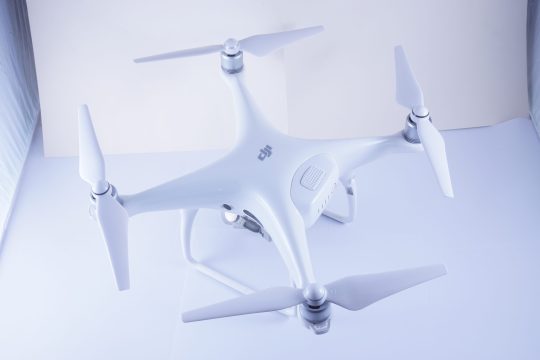
View On WordPress
#4k drone#camera drones#commercial drones#dji#dji mavic 3 pro#dji mavic pro#dji phantom 4#dji phantom 4 advanced#dji phantom 4 pro specs#drones#phantom pro v2
0 notes
Text
youtube
In this webinar excerpt, join Enterprise UAS EVP Randall Warnas and Parrot Drones Sales Manager François-Xavier Charbonnel as they discuss the mapping and surveying with the Parrot ANAFI Ai.
#drone camera price#dji mavic 2 pro#dji phantom 4#dji phantom 4 pro#dji phantom#phantom 4 pro#flying drones#drone photography#best drone with camera#remote control drone#Youtube
0 notes
Text
باحثون صينيون: إشعاعات ستارلينك تكشف الطائرات الشبحية
ادعى فريق بحثي صيني قدرته على رصد الطائرات الشبحية باستخدام الإشعاعات المنبعثة من أقمار ستارلينك الصناعية التابعة لشركة سبيس إكس.
تفاصيل التجربة:
استخدم الباحثون طائرة مسيرة DJI Phantom 4 Pro كبديل للطائرة الشبحية.
اعتمدوا على نظام رادار أرضي لرصد الطائرة المسيرة.
استفادوا من إشعاعات قمر ستارلينك صناعي كان يحلق فوق الفلبين.
مميزات التقنية الجديدة:
تتجاوز حدود التصميم الشبحي للطائرات المصمم…
0 notes
Text
#UKDEALS TSLBW 75cm Drone Landing Pad Universal Waterproof Portable Fast-Foldable Landing Mat Drone Accessorie Drone Helipad for All DJI Drones FPV/Spark/Mavic Pro Inspire 2/1 3DR Solo Phantom 2/3/4 Pro https://www.bargainshouse.co.uk/?p=122524 https://www.bargainshouse.co.uk/?p=122524
0 notes
Text

Se estratta dallo zaino, al massimo sganciare copriobiettivo e montare paraluce.
Alla peggio, cambiare obiettivo.
Così una fotocamera terrestre, per essere pronta all'uso.
E un drone?
Sapete, iniziai piuttosto bene, coi droni.
Un Dji Phantom 4 Pro, usato.
Il che comportava una mostruosa occupazione di spazio, nello zaino istesso.
Almeno però le braccia erano già estese, proprio perché non ripiegabili.
Tutto bene, allora?
Per niente, quanto ad approntabilità.
Montare le eliche.
Fissare lo smartphone al radiocomando.
Collegare il cavo.
E con i droni pieghevoli?
Dover aprire le braccia.
Fissare gli sticks al radiocomando.
Cavo e smartphone, se il radiocomando non è "indipendente".
Vedo ora l'australiano Aeroo Pro Drone.
Braccia già estese; eliche già montate.
E per gli sticks, una concavità già prevista nella custodia, potendoli dunque premontare sul radiocomando.
Parafrasando Neil Armstrong, un piccolo passo per i droni, un grande balzo per l'umanità.
Lo sapete, certi droni - specie in ambito FPV o industrial/agrario - sono semiallestiti.
Da lì, è tutto uno scendere.
Ma circa la praticità dei dispositivi terrestri, non ci siamo ancora.
Qualcuno dice che si perdono fidanzate, così, andando in giro.
Di certo, è un limite all'usabilità; in lunghe ed articolate sessioni, la differenza si sente.
Anche perché esiste un ulteriore Pasticciaccio Brutto, parafrasando Carlo Emilio Gadda:
non si può preimpostare niente, prima, se non si accende tutto.
All rights reserved
Claudio Trezzani
0 notes
Text
Ultimate Drone Guide: Top Camera Drones, Accessories & Technology

In the world of modern technology, drones have revolutionized how we capture images, explore the skies, and even conduct business. Whether you’re a hobbyist looking for a new gadget, a professional photographer, or simply curious about this soaring trend, our comprehensive drone guide will navigate you through everything you need to know. From understanding drone technology to selecting the best camera drones and essential drone accessories, we’ve got you covered.
Understanding Drone Technology
Drone technology has evolved rapidly over the past decade. What was once a niche product for enthusiasts is now a mainstream tool used across various industries. At its core, a drone is an unmanned aerial vehicle (UAV) that can be controlled remotely. Here's a breakdown of the key components that define drone technology:
Flight Controllers: The brain of the drone, flight controllers manage the aircraft’s stability and navigation. They process inputs from the pilot and sensors to ensure smooth flight.
Motors and Propellers: These are responsible for the drone’s lift and movement. Most drones use brushless motors for efficiency and durability.
Sensors: Modern drones come equipped with a variety of sensors including GPS, accelerometers, gyroscopes, and sometimes even obstacle detection sensors. These help in stabilizing the drone and improving its flight experience.
Batteries: Powering the drone is a crucial aspect, and the battery life can significantly impact the duration of your flight. Most drones use lithium polymer (LiPo) batteries for their high energy density and lightweight properties.
Communication Systems: Drones use radio frequency (RF) or Wi-Fi signals to communicate with the pilot’s remote control. Advanced models may include cellular connectivity for enhanced range.
Top Camera Drones for Every Need
When it comes to camera drones, the options are as diverse as their applications. Whether you're an amateur looking to capture breathtaking landscapes or a professional needing high-resolution imagery, there's a camera drone tailored for your needs. Here are some top picks:
DJI Mavic Air 2: Known for its impressive 48MP camera and 4K video capabilities, the DJI Mavic Air 2 is perfect for both casual users and serious photographers. It offers obstacle avoidance, a robust flight time, and advanced shooting modes, making it a versatile choice.
DJI Phantom 4 Pro V2.0: This drone is a favorite among professionals for its 1-inch 20MP sensor and mechanical shutter. The Phantom 4 Pro V2.0 offers exceptional image quality and stability, ideal for high-end video production and aerial photography.
Autel Robotics EVO Lite+: With a 50MP camera and 6K video recording, the EVO Lite+ is a formidable competitor in the high-resolution drone market. Its compact design and advanced flight features make it suitable for both travel and professional use.
Skydio 2: Renowned for its autonomous flying capabilities, the Skydio 2 uses advanced AI to navigate complex environments and avoid obstacles. This drone is excellent for capturing dynamic shots and is particularly useful for adventurous shoots.
Essential Drone Accessories
To get the most out of your drone, investing in the right accessories can enhance your flying experience and improve your results. Here’s a rundown of essential drone accessories that every drone enthusiast should consider:
Extra Batteries: Longer flight times mean more fun and more footage. Extra batteries are crucial for extended shoots and to avoid downtime.
Carrying Cases: Protect your investment with a sturdy carrying case. Cases with custom foam inserts ensure that your drone and accessories are safe during transport.
Propeller Guards: Ideal for beginners or when flying in tight spaces, propeller guards help protect your drone from accidental collisions and damage.
ND Filters: Neutral density (ND) filters are essential for controlling camera exposure and improving video quality. They help in reducing glare and maintaining smooth video footage in bright conditions.
Gimbal Stabilizers: While most camera drones come with built-in gimbals, additional stabilizers can provide extra smoothness and precision for high-quality video shoots.
Tablet Mounts: For a better view of your camera feed and enhanced control, consider a tablet mount for your remote controller. It provides a larger display compared to smartphones, making it easier to see your drone’s camera feed.
How to Choose the Right Drone
Selecting the right drone can be overwhelming given the myriad of options available. Here are some factors to consider when making your decision:
Purpose: Determine what you primarily want to use the drone for—recreational flying, photography, or professional filmography. Your choice will depend on your specific needs.
Budget: Drones come in a wide range of prices. Set a budget that balances your needs with what you're willing to spend. Remember, higher price often equates to better features and more durability.
Flight Time: Check the flight time specifications of the drone. Generally, higher-end models offer longer flight times, but additional batteries can also be purchased for extended use.
Camera Quality: If aerial photography is your goal, prioritize drones with high-resolution cameras and advanced shooting modes. For basic usage, a lower-resolution camera might suffice.
Ease of Use: If you’re new to drones, opt for models with beginner-friendly features such as automatic landing, altitude hold, and simple controls.
Regulations: Familiarize yourself with local regulations regarding drone usage. Different regions have varying rules on where and how drones can be flown.
Drone Technology Trends to Watch
Drone technology is constantly evolving, with new innovations emerging regularly. Here are some trends to watch for in the near future:
AI and Machine Learning: The integration of AI in drones is enhancing autonomous flight capabilities, allowing drones to perform complex tasks like object tracking and obstacle avoidance more efficiently.
Swarming Technology: This involves multiple drones flying in formation and coordinating with each other. It’s being explored for various applications, including agricultural monitoring and large-scale inspections.
Extended Flight Times: Advances in battery technology and energy efficiency are gradually increasing the flight time of drones, making them more practical for extensive missions.
Enhanced Camera Capabilities: Ongoing improvements in camera sensors and stabilization systems are pushing the boundaries of what drones can capture, from 8K video to advanced low-light performance.
Regulatory Developments: As drones become more prevalent, regulatory frameworks are evolving to address privacy concerns, airspace management, and safety standards.
Final Thoughts About Drones
Drones represent a fascinating intersection of technology and creativity, offering new ways to capture the world from above. With this drone guide, you now have a solid understanding of drone technology, top camera drones, and essential accessories. Whether you're a hobbyist or a professional, staying informed about the latest trends and advancements in drone technology will ensure you make the most out of your flying experience.
For those just starting out, remember to choose a drone that fits your needs and budget, and always follow local regulations to ensure safe and enjoyable flights. As technology continues to advance, the possibilities with drones are virtually limitless—so take to the skies and explore the exciting world of aerial technology!
Frequently Asked Questions (FAQs) About Drones
1. What is a drone?
A drone, or unmanned aerial vehicle (UAV), is an aircraft that operates without a human pilot onboard. It can be controlled remotely via a transmitter or autonomously using onboard systems. Drones come in various types, from recreational models to professional-grade devices used for aerial photography, surveying, and more.
2. What are camera drones used for?
Camera drones are equipped with high-quality cameras and are used for capturing aerial photos and videos. They are popular among photographers, filmmakers, and hobbyists for producing stunning visuals from unique perspectives. They are also used in industries such as real estate, agriculture, and environmental monitoring.
3. How do I choose the right drone for me?
Choosing the right drone depends on several factors including:
Purpose: Determine if you need it for recreation, photography, or professional use.
Budget: Higher-priced models offer better features and build quality.
Camera Quality: For high-quality imagery, select drones with advanced camera systems.
Ease of Use: Beginners might prefer drones with user-friendly controls and features.
Flight Time: Consider the battery life and the availability of extra batteries.
4. What are some essential drone accessories?
Essential drone accessories include:
Extra Batteries: For extended flight time and convenience.
Carrying Cases: To protect your drone during transport.
Propeller Guards: To prevent damage from collisions.
ND Filters: To manage exposure and improve video quality.
Gimbal Stabilizers: For smoother footage.
Tablet Mounts: For a better view of the camera feed and enhanced control.
5. How long can a drone fly on a single charge?
Flight time varies depending on the drone model and battery capacity. Most consumer drones offer between 20 to 30 minutes of flight time per battery charge. High-end models might provide slightly more, and having extra batteries can help extend your flying sessions.
6. Are there any regulations for flying drones?
Yes, drone regulations vary by country and region. Common regulations include:
Registration: Some countries require drones to be registered with aviation authorities.
No-Fly Zones: Drones are restricted from flying in certain areas such as near airports or government buildings.
Altitude Limits: There are often limits on how high you can fly.
Line of Sight: Pilots typically need to keep their drone within visual line of sight.
It's important to check and comply with local regulations to ensure safe and legal operation of your drone.
7. Can drones be used in bad weather?
Drones are generally not designed for extreme weather conditions. Strong winds, rain, and snow can affect the drone’s stability and performance. It's best to fly in calm, clear weather conditions and avoid flying in adverse weather to prevent damage to your drone and ensure safe operation.
8. How do I maintain my drone?
Proper maintenance is crucial for the longevity and performance of your drone. Key maintenance tips include:
Regular Cleaning: Keep the drone and its components clean, especially after flying in dusty or dirty conditions.
Battery Care: Follow proper charging and storage guidelines to extend battery life.
Firmware Updates: Keep your drone’s firmware updated to ensure it has the latest features and fixes.
Inspect Components: Regularly check for wear and tear on parts such as propellers and motors.
9. What should I do if my drone crashes?
If your drone crashes, first ensure that everyone is safe and that the drone is in a safe location. Then, assess the damage to the drone and its components. Check if any parts need immediate replacement or repair. Many manufacturers offer repair services, and it may be worthwhile to consult with a professional if significant damage occurs.
10. Are there any privacy concerns with drones?
Yes, drones equipped with cameras can raise privacy concerns. It’s important to respect people's privacy and not capture images or videos of individuals without their consent. Familiarize yourself with local privacy laws and regulations to avoid legal issues and ensure responsible drone use.
Get answers to common questions about drones, including their uses, essential accessories, regulations, and maintenance tips. Everything you need to know in one place!
0 notes
Text
Top 10 Drones for Professional Photography: Capture Perfection

In the realm of professional photography, the ability to capture stunning aerial shots has become increasingly important. Whether you're a seasoned photographer or a budding enthusiast, investing in the right drone can significantly elevate your work. To help you make an informed choice, we've curated a list of the top 10 drones for professional photography, ensuring you can capture perfection with every shot.
1. DJI Phantom 4 Pro V2.0
When it comes to the best drone for professional photography, the DJI Phantom 4 Pro V2.0 is a top contender. This drone boasts a 1-inch 20MP sensor, capable of shooting 4K/60fps video, and an impressive 30-minute flight time. Its intelligent flight modes and obstacle sensors make it a reliable choice for photographers who demand precision.
2. DJI Mavic 3
The DJI Mavic 3 is another exceptional option for professional photographers. Equipped with a dual-camera system featuring a 4/3 CMOS Hasselblad sensor, this drone delivers incredible image quality. With a flight time of up to 46 minutes and advanced obstacle avoidance, the Mavic 3 is designed for capturing stunning aerial shots with ease.
3. Autel Robotics EVO Lite+
Autel Robotics EVO Lite+ stands out with its versatile camera options, including a 1-inch CMOS sensor that excels in low-light conditions. This drone offers 6K video resolution and a flight time of up to 40 minutes, making it a strong contender among drones for professional photography.
4. DJI Air 2S
For photographers looking for a compact yet powerful option, the DJI Air 2S is a great choice. It features a 1-inch 20MP sensor, capable of capturing 5.4K video. With its compact design and a flight time of 31 minutes, the Air 2S is perfect for those who need portability without sacrificing image quality.
5. Skydio 2+
The Skydio 2+ is known for its unmatched autonomous flight capabilities, making it ideal for dynamic and complex shots. While it doesn't boast the highest resolution, its 12MP camera and 4K/60fps video still deliver impressive results. It's a perfect drone for photographers who need to focus on the shot while the drone handles the flying.
6. DJI Inspire 2
The DJI Inspire 2 is a powerhouse designed for professional filmmakers and photographers. It supports dual operators, with one controlling the drone and the other the camera. The Inspire 2 is compatible with various camera options, including the Zenmuse X7, which offers a Super 35 sensor and up to 6K resolution. This drone is a favorite among industry professionals who need top-tier performance.
7. Parrot Anafi

The Parrot Anafi is a compact and lightweight drone that doesn't compromise on image quality. It features a 21MP camera with 4K HDR video capability and a unique 180-degree tilt gimbal. With a flight time of 25 minutes, it's a solid option for photographers seeking portability and flexibility.
8. Yuneec Typhoon H3
Yuneec Typhoon H3 is a hexacopter designed in collaboration with Leica, featuring a 20MP 1-inch sensor and 4K video at 60fps. Its six-rotor design ensures stability, even in windy conditions, making it a reliable choice for capturing professional-grade aerial shots.
9. DJI Mini 3 Pro
Don't let its small size fool you—the DJI Mini 3 Pro is a highly capable drone for professional photography. With a 1/1.3-inch sensor, it captures 48MP photos and 4K/60fps video. Its lightweight design allows for easy transportation, making it an excellent choice for travel photographers.
10. PowerVision PowerEgg X
The PowerVision PowerEgg X is a versatile drone that doubles as a handheld gimbal camera. It features a 12MP sensor and 4K video capability. Its waterproof design and AI-powered features make it a unique option for photographers who want a multi-functional device.
Conclusion
Selecting the right drone for your professional photography needs is crucial for capturing those perfect shots. The options listed above represent the best drones for professional photography, each offering unique features to suit different styles and requirements. Whether you prioritize image quality, portability, or advanced flight capabilities, there's a drone on this list that will help you elevate your work and capture perfection from the skies.
0 notes
Text

Would Buying The DJI Phantom 4 Pro Over The Phantom 4 Yield Contrastable Results?
So, you are thinking about upgrading your drone game and wondering if the DJI Phantom 4 Pro is worth the extra bucks over the Phantom 4? Let us break it down.
Camera Quality: Next-Level Shots
First off, the camera on the Phantom 4 Pro is a major upgrade. It rocks a 1-inch 20MP sensor, compared to the Phantom 4's 1/2.3-inch 12MP sensor. What does this mean for you? Sharper images, better low-light performance, and richer colors. If you are into aerial photography or videography, this alone might be a game-changer.
Obstacle Sensing: Fly Smarter
The Phantom 4 Pro does not just see forward; it sees in five directions. With sensors on the front, rear, sides, and bottom, this drone is way better at avoiding obstacles. The Phantom 4 only has forward-facing sensors, so you will need to be more careful when flying in tight spaces or complex environments.
Flight Time: Stay In The Air Longer
Both drones have impressive flight times, but the Phantom 4 Pro edges out with around 30 minutes compared to the Phantom 4’s 28 minutes. It might not sound like much, but those extra minutes can make a difference when you are capturing that perfect shot or exploring a new area.
Remote Controller: Get More Control
The Pro’s remote controller comes with a built-in screen option, offering 1080p brightness that is perfect for outdoor flying. The Phantom 4's controller requires a smartphone or tablet, which can be less convenient in sunny conditions.
Price: Is It Worth It?
Here is the kicker. The Phantom 4 Pro is pricier. But if you are serious about your drone adventures, the enhanced features and improved safety might just justify the investment.
Final Thoughts
Sorry to inform you that the DJI Phantom 4 Pro model has been discontinued. If you are looking for the best drone for cinematography, this blog recommends checking out this PAGE. If you are planning to engage in mapping any area, this blog recommends checking out this PAGE.
0 notes
Text
Everything You Need To Know About Drone Mapping
Drones Mapping facilitate a paradigm shift, rendering it possible to view the world in a way that offers insights comparable to those of birds. This transformative technology smoothly incorporated itself into the different sectors of the country, from farmers to the city. Nonetheless, this is not just about making aerial photography; rather, it is about turning the pictures into actionable figures, manifesting patterns, guiding strategies, and boosting innovations.
What is drone mapping?
Drone mapping consists of using drones with sensors that are attached to produce aerial pictures. These images are processed through specialized software that generates detailed charts and models. This technique is unique in that it saves time, ensures accuracy, and provides information that was difficult to obtain relying on traditional methods.
The Best Software for Drone Mapping
Photogrammetry Software: The photogrammetry program treats aerial images to give three-dimensional models, orthomosaics, and digital elevation models (DEMs).
LiDAR Processing Software: LiDAR processing software would perform analysis of the LiDAR data, such as generating detailed terrain models, point clouds, and topographic maps.
The Best Drones for Mapping
DJI Mavic 3: Now DJI unveils the new Mavic 3, which includes advanced camera features that allow for mapping projects with high-resolution imagery and precise data collection.
Phantom 4 Pro: The Phantom 4 Pro is well liked by people for its ability to stay stable, reliable, and intelligent in flight modes. It is thus apt for mapping projects that demand accuracy and speedy operations.
Techniques for Effective Drone Mapping
Meticulous Planning: Make carefully thought-out drone missions, taking all the factors include flight altitude, overlap settings, camera angles, and weather conditions into account.
Optimal Camera Settings: Set the camera parameters of exposure, focus (sharpness of the picture), white balance, and photo format for crisp-quality aerial images.
Strategic Flight Routes: Equally fly the survey route more effectively, keep distortions low, and ensure complete data coverage.
Thorough Data Processing: Work with software that has been programmed especially for mosaic creation, 3D modeling, and analytical tasks with drone-collected data.
Quality Control Measures: Install measures to monitor quality control and confidence verification for data accuracy, analyze errors, and improve the output maps for dependable results.
The Future of Drone Mapping:
Increased Accessibility: Drones afford better acceptability by different sectors of the economy and professionals due to their availability in greater numbers, which means more adoption and usage for mapping and surveying applications.
Integration with Cutting-Edge Technologies: The drones are becoming multi-visionary machines where AI, ML, IoT, and cloud technologies will be integrated to enhance data analysis, automation, and decision-making.
Enhanced Regulation: To maintain or improve safety and privacy in human life, regulatory systems are changing for drone operations to provide clarity and guidance on drone use in different spheres, respectively.
Novel Applications: Unmanned systems are increasingly being used for non-military purposes in fields such as environmental control, natural disaster response, city planning, and infrastructure development, thus creating a space for them to grow and spread their wings.
Improved Emergency Response Capabilities: Drones change the way crisis response delivers dynamic real-time situation awareness, from the air to the to the aerial survey, and support and assist peer workers in urgent situations and disasters.
In Conclusion:
The accurate location data that aerial drone mapping provides nowadays is a must-have for businesses. This capability to deliver information quickly and accurately has been at the forefront of the impact of technology in many industries; therefore, it is apparent that the internet is one of the key aspects of technological advancement in Australia. Utilizing the possibilities of drones in mapping goes beyond taking an aerial view, which is Aerologix and industry development of new technologies, capturing trends, and coming up with fresh ideas. As the leader in drone mapping services, Aerologix keeps promoting innovations to consolidate the mapping area transformation process and implementation.

For more details:
Visit Us - https://aerologix.com/everything-you-need-to-know-about-drone-mapping/
0 notes
Video
Nature playing Tetris, Belkmerweg, village of Schagerbrug, The Netherlands. by Alex de Haas
#Aurora HDR#DJI#Dutch#Europa#Europe#HDR#Holland#Lightroom#Nederland#Nederlands#Netherlands#Noord-Holland#Phantom#Phantom 4 Pro#Tour des Fleurs#Tour des Fleurs 2022#agriculture#agricultuur#akker#akkerbouw#bloem#bloemen#bloementeelt#bloemenvelden#bollenveld#bollenvelden#bulbfield#bulbfields#drone#farmland
1 note
·
View note
Text
Perbedaan Drone Mainan dan Drone Profesional



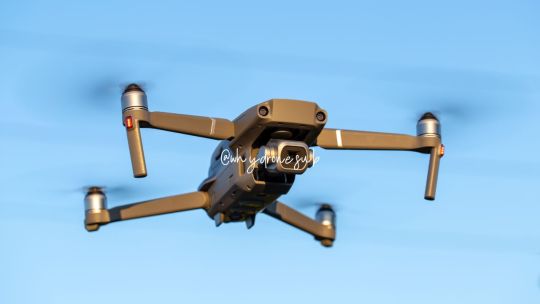

Perbedaan Drone Mainan dengan Drone Profesional - Jasa Drone Aerial Surabaya
Jasa Drone Aerial Surabaya - Well! Perbedaan antara drone mainan dan drone profesional dapat dilihat dari spesifikasi yang mereka miliki. Berikut adalah contoh perbedaan spesifikasi antara drone mainan dan drone profesional, serta beberapa merek drone yang mewakili masing-masing kategori:
Drone Mainan
- Ukuran Kecil: Drone mainan cenderung memiliki ukuran yang lebih kecil dan ringan.
- Baterai Terbatas: Drone mainan sering kali memiliki baterai yang memiliki kapasitas yang lebih rendah dan waktu terbang yang lebih singkat.
- Kamera Terbatas: Drone mainan umumnya dilengkapi dengan kamera yang memiliki resolusi rendah khususnya di malam hari dan kualitas gambar yang sederhana.
- Kontrol Sederhana: Drone mainan biasanya dilengkapi dengan kontrol yang sederhana dan tidak memiliki fitur canggih seperti GPS atau sensor navigasi.
- Harga Terjangkau: Drone mainan umumnya memiliki harga yang lebih terjangkau daripada drone profesional.
Contoh 5 Merek Drone Mainan:
- SJRC F11/F22
- Hubsan X4 H107C
- Eachine E010
- Holy Stone HS170 Predator
- Cheerson CX-10
Drone Profesional
- Ukuran dan Bobot: Drone profesional sering kali memiliki ukuran dan bobot yang lebih besar untuk mengakomodasi fitur dan komponen yang lebih canggih.
- Waktu Terbang Panjang: Drone profesional biasanya dilengkapi dengan baterai yang memiliki kapasitas tinggi, memungkinkan waktu terbang yang lebih lama.
- Kamera Berkualitas Tinggi: Drone profesional dilengkapi dengan kamera yang memiliki resolusi tinggi dan kemampuan pengambilan gambar dan video yang profesional.
- Fitur Canggih: Drone profesional dilengkapi dengan fitur-fitur canggih seperti GPS, sistem navigasi otomatis, sensor penghindar rintangan, dan stabilisasi gambar yang tinggi.
- Harga Lebih Tinggi: Drone profesional biasanya memiliki harga yang lebih tinggi daripada drone mainan karena fitur dan kualitas yang lebih tinggi.
Contoh 5 Merek Drone Profesional:
- DJI Phantom 4 Pro
- DJI Inspire 2
- Yuneec Typhoon H Pro
- Autel Robotics Evo II Pro
- Freefly Alta X
Penutup
Perbedaan spesifikasi tersebut mencerminkan perbedaan penggunaan dan tujuan antara drone mainan dan drone profesional. Drone mainan biasanya digunakan untuk hiburan dan latihan dasar, sementara drone profesional digunakan untuk aplikasi yang lebih serius seperti fotografi dan videografi udara, survei udara, dan inspeksi industri. See you!
Source: https://www.jasadronesurabaya.com
0 notes
Text
DJI Phantom 4 RTK Specifications
Overview
The DJI Phantom 4 RTK is a professional-grade drone designed for surveying and mapping tasks. It is equipped with a range of advanced features that make it ideal for tasks that require high-precision and accurate data.
One of the key features of the DJI Phantom 4 RTK is its high-resolution camera, which can capture images with a resolution of up to 20 megapixels. The camera is mounted…
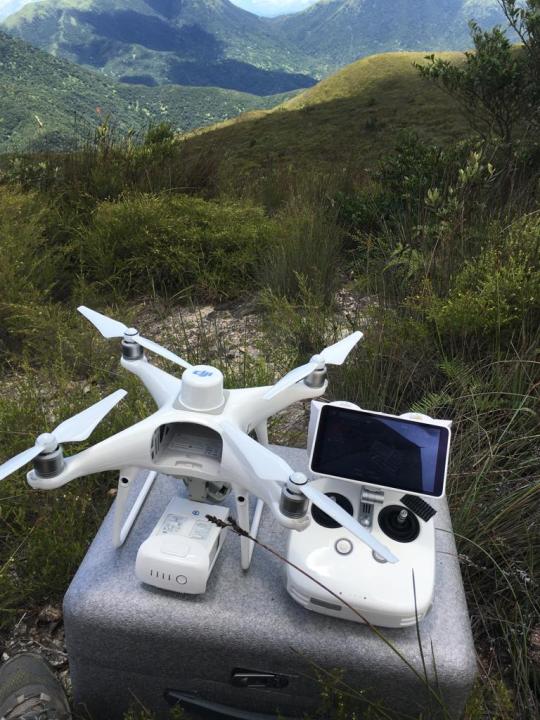
View On WordPress
#4k drone#camera drones#commercial drones#dji#dji mavic 3 pro#dji mavic pro#dji phantom 4#dji phantom 4 advanced#dji phantom 4 pro specs#dji phantom 4 rtk#drones#map survey drones
0 notes
Text
4000mAh Batterie pour Hongjie 8043130 compatibilité Hongjie 8043130 Drone
Cette batterie pour Hongjie 8043130, Capacité 4000mAh, Tension 7.4V, 100% compatibilité HP 6560B 6565B 6470B 6475B 6570B. Toutes Hongjie 8043130 batteries a passé les attestations internationales ISO9001, RoHS et de certification CE. Cette batterie 8043130 a une capacité et une fiabilité plus élevée que la concurrence. Retour de 30 jours! Garantie de 12 mois!
4000mAh Batterie pour Hongjie 8043130 compatibilité Hongjie 8043130 Drone
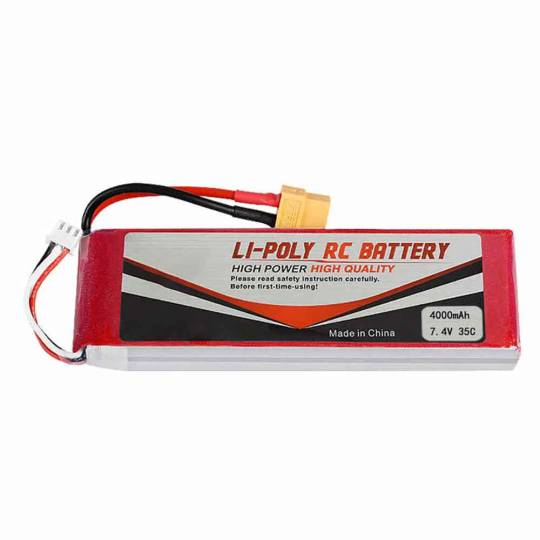
✔ La Batterie Drone Pour Hongjie 8043130 est neuve et composée de cellules de qualité.
✔ La Sécurité en Premier: Nos batteries possèdent les certificats de sécurité CE, FCC et RoHS ainsi que diverses précautions de sécurité, notamment une protection contre les courts-circuits, la surchauffe, et la surcharge. Chaque batterie pour Hongjie 8043130 a passé les tests en usine.
✔ Elle est 100 % compatible avec votre batterie d'origine.
✔ Les cellules de catégorie A garantissent la plus longue durée de vie et la plus grande stabilité du cycle. 100% Nouveau du fabricant. Jusqu'à 500 cycles de recharge pendant la durée de vie de la batterie.
✔ Clientèle Service: 1 année Garantie Service; 24 x 7 email Soutien; 30 journée Rembourser ou Remplacement.
Compatible Part Numéro:
8043130
Convient À:
Hongjie 8043130 Drone
Maintien De La Durée De Vie De La Batterie
Pour réduire l'usure de Batterie, il y a quelques précautions simples à prendre
✔Chargez toujours votre Batterie à 100%.
✔Chargez entièrement une nouvelle Hongjie 8043130 Batterie avant sa première utilisation. Déchargez-la ensuite complètement, puis rechargez-la complètement.
✔Évitez la chaleur excessive.
✔Travaillez autant que possible avec l'adaptateur CA branché.
✔Les précautions ci-dessus amélioreront non seulement la durée de vie de la Batterie, mais elle aura également une plus longue autonomie par charge.
DÉCOUVREZ NOS OFFRES SIMILAIRES:
550mAh Batterie pour MJXRIC X709 Drone
2970mAh Batterie pour DJI Spark Mavic Pro Air
3830mAh/43.6Wh Batterie pour DJI Intelligent Flight
6000mAh/44.4Wh Batterie pour DJI Phantom 3/4 Advanced PRO 4K Inspire Remote Controller
2.6AH/18.72Wh Batterie pour DJI RC03012
6300mah/70Wh Batterie pour Yuneec Q500 4K Q500 PRO Drone
550mAh/2Wh Batterie pour Parrot Mambo hydrofoil Mini Drone
5200mah/98.8Wh Batterie pour Flyability Elios 2 5ICP8/51/117
0 notes